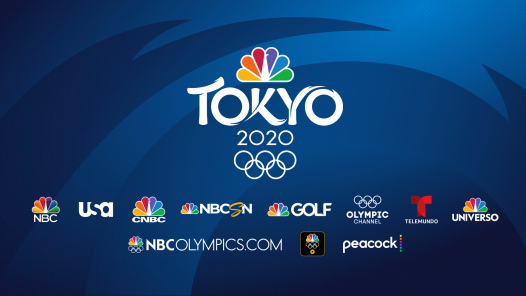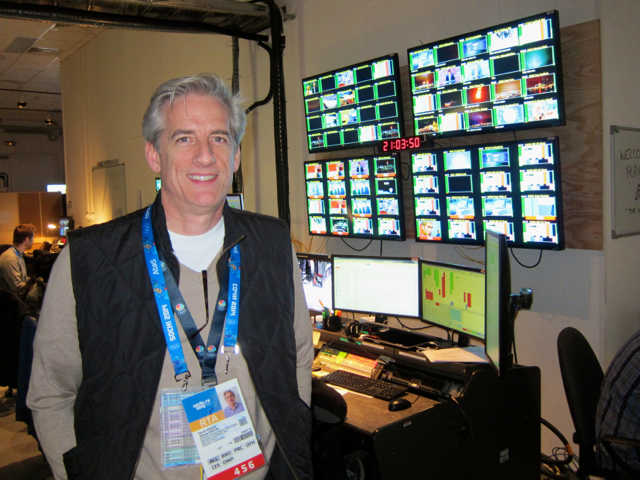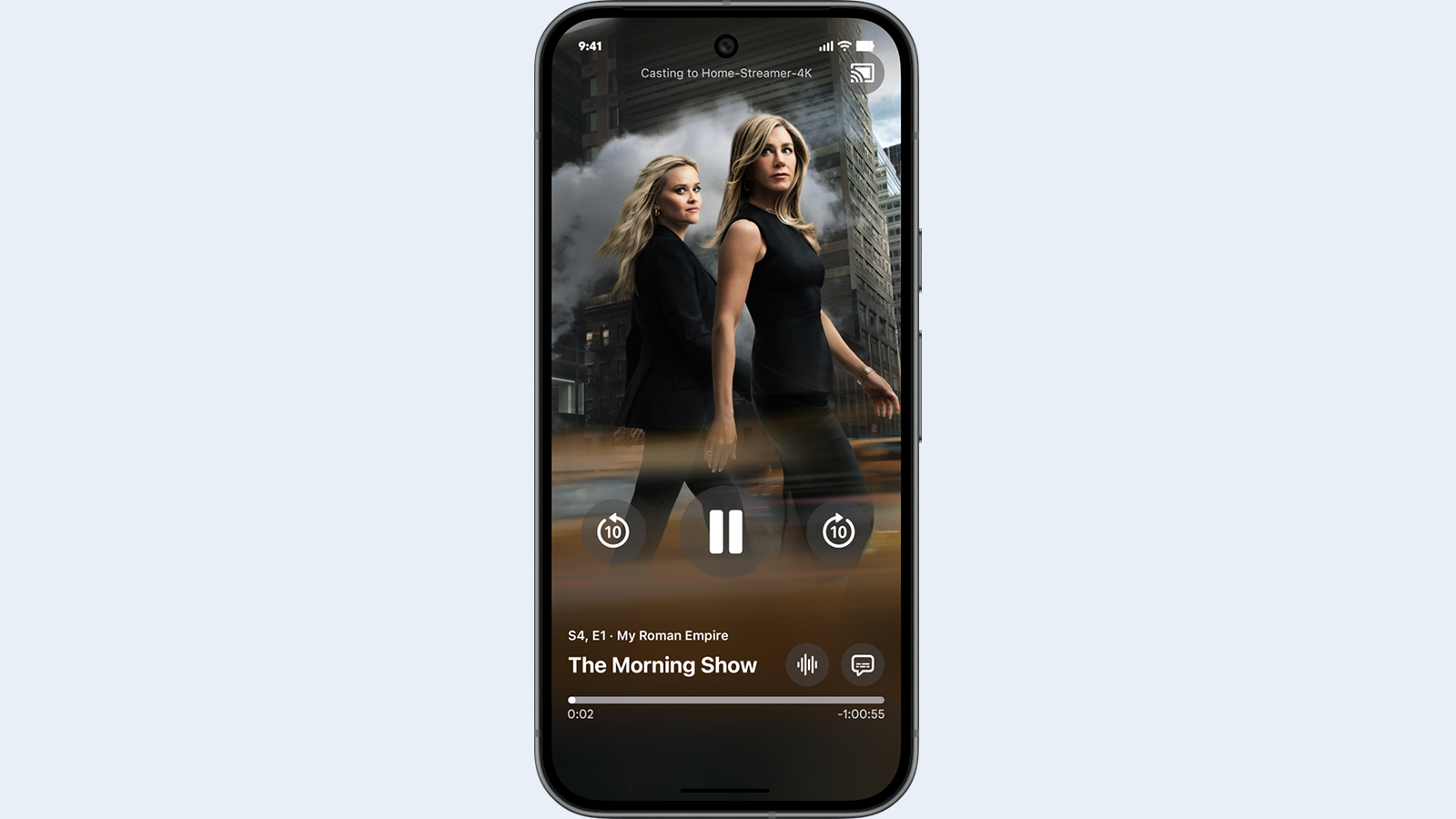NBC’s Olympics Coverage Honed From Decades of Tech Experience
Network uses advances in IP, HDR to up their game

STAMFORD, Conn.—NBCU’s Summer Olympics operation is a herculean effort at the best of times without having COVID-19 to contend with. The Games’ postponement in 2020 at least gave the network some breathing space to revise its plans but with uncertainties around travel and health regulations changing up until the last minute, the logistics are staggering.
Nonetheless, David Mazza, senior vice president and CTO for NBC Sports Group and NBC Olympics is doing his level best to keep the machine well oiled.
“We have aggressive plans, as does [IOC host broadcaster] OBS, to make this the most immersive experience for fans especially since so many can’t come to the games,” he says. “My main job as we approach the Games is trying to predict when the train is going to go off the track and bump it back on before there’s an actual wreck. You’ve got to be ready to minimize the damage.”
Other than the not inconsiderable challenge of meeting COVID protocols, the biggest logistical shift sees NBC relocating 400 staff and a number of venue control rooms back home. These are the control rooms for basketball, beach volleyball, diving, golf and tennis.
With Stamford already utilizing all eight control rooms, four mobile units have been docked on site. Then, to make sure everyone is socially distanced, NBC also moved three dayparts out: one to Telemundo Center in Miami from where Telemundo Deportes is presented; another to 30 Rockefeller Plaza in Manhattan and another daypart to CNBC in Englewood Cliffs, N.J. A further 150 people working on digital editorial are set up in a hotel near the Stamford HQ.
Nonetheless, in Japan the number of NBC crew including freelancers is still around 1,600.
From SDI to IP for UHD
The professional video industry's #1 source for news, trends and product and tech information. Sign up below.
As if the shifting sands of Covid weren’t enough, NBC is undertaking a key technical upgrade too. It is finally retiring the SDI router after 15 years and five Games of service and implementing an IP core at its broadcasting center in Tokyo and Stamford. This is based on ST 2110 Grass Valley gear, Cisco routers and the same VSM control system used for the past couple of Games.
“We pretty much gutted all our RIBs [racks-in-a-box] down to bare metal,” Mazza said. “Our original plan was to get that IP to settle in for Tokyo as our big step before tackling 4K HDR at the Beijing Winter Games February 2022.”
Then the pandemic happened. “We realized there is such a short turnaround [six months] between successive Games closing and opening ceremonies and that we were not going to be able to make the shift in time,” Mazza added. “So, we accelerated the HDR 4K shift into Tokyo.”
HDR is being prioritized by broadcasters around the world as a step-change in enhancing viewer experience. It can boost the look of shows regardless of whether they are in SD, HD or 4K. In NBC’s judgment, it wanted to bring improved content to the home far sooner than wait for another Games cycle.
NBC could lean on three years’ worth of Notre Dame football in preparation for HDR at scale. It has spent a great deal of effort on single stream productions [shooting 1080p and down converting to the 99% of the audience still viewing SD] and also on the round trip process [for graphics, for example] of elements produced in SDR, upLUTed to HDR, and downLUTed to SDR.
“HDR is tricky stuff,” Mazza says. “There’s a lot of ways to screw it up if you don’t convert it properly. But after all the work that’s gone into the LUT conversion for round tripping, we think we’re in a good place.”
The Notre Dame coverage enabled NBCU to experiment with different LUTs for up and down conversion. This was based on OBS’ HLG LUTs (aka “look-up tables,” which help color grade footage), which the Olympic broadcaster shared with NBC. After some adjustments the broadcaster arrived at “NBC LUTs,” which it recently offered to the industry.
“We’re using both OBS’ and our LUTs for our HDR coverage depending on how it best fits our workflow,” Mazza explains. “The main OBS idea that we preserved was leaving more room for highlights in SDR. It means we have some latitude in the down-conversion for those HDR highlights, which we think enhances the SDR signal.”

At the venues
The key events for the domestic primetime audience are the ceremonies, track and field, gymnastics, swimming, diving and beach volleyball. While switching for the latter two moved home, the rest remain in Tokyo.
At those primetime venues NBC is fielding crews of 80-100 while NBC’s setup at the International Broadcast Centre is home to the program tech leaders and decision makers. All unilateral NBC feeds plus host material is aggregated at the IBC for transfer as 1080P HDR over 8x10Gig pipes to Stamford, which then becomes the U.S. aggregation point for onward distribution to Telemundo, CNBC and 30Rock.
Mazza explains, “At the venue we book a video split of an OBS camera feed [such as super slo-mo] into our switcher. In Stamford they record all the OBS host feeds and some multi-clips [such as super slo-mos that didn’t go to air] running in parallel to the live feed. Our digital and social teams can dive into that extra content.”
This includes bespoke content for Amazon Twitch such as primetime sidecasting, where Twitch creators will commentate on the live events, encouraging viewers to tune in for NBC's live coverage at the same time.
The scheduling and time zones (Tokyo is 16 hours ahead of L.A.) works for showing swimming and athletics live in primetime but for some sports—like gymnastics, which attracts a huge audience—quick turnaround edits (2–3 hours) will be made at the venue. Additional edit suites in Tokyo and Stamford will craft feature programming.
Its presentation of the Games’ opening ceremonies will offer a hint of that: On Friday, July 23, NBC will offer a first—a live morning broadcast of the opening spectacle, starting at 6:55 a.m., followed by a special broadcast of “Today” and a daytime Olympic program. There will also be a traditional primetime broadcast.
“OBS coverage is fabulous but as always we’ll supplement their cameras at those five big prime time venues with 8–12 of our own in order to tell the U.S. story,” Mazza said. “For the other 25 sports we’ll augment the host feed with a ‘mix zone camera,’ typically transmitting via a LiveU unit. The only announcers on site will be those for the bigger sports. Back in Stamford there are 30 announce booths for calling the other sports.”
NBC will further augment coverage by accessing Content+, a web-based platform primarily dedicated to short-form and digital content. This EVS-based server system and MAM houses ISOs, non-aired shots and specific angles plus archive of previous Olympics.
“Over the years we’ve worked with OBS so that when they publish a clip to Content+ it alerts our MAM and our system then requests that clip and pulls it over,” Mazza says. “They are not the same system but they are pretty well tied together. For example, in our MAM we might have a logger doing subjective logging [e.g pointing out that Michael Phelps’ mom is in the crowd] but we have also integrated OBS’ EVS logs so we don’t need to duplicate that effort.”
Home run to Connecticut
All of the broadcast circuits are lightly compressed back to Stamford in J2k while NBC will use OBS MPEG-4 feeds where latency is not critical.
“If we can afford the 2 1/2 second latency to trade for higher picture quality it’s Long GOP MPEG-4,” Mazza said, referring to the format that uses a mixture of inter- and intra-coding. For monitoring where we care more about latency—such as for our announcers—it’s a lower bitrate MPEG-4. I think we’ll all be shifting to HEVC for UHD deliverables but most of the HD is MPEG-4 today.”
In event of failure, NBC has a “belt and braces” safety net with four fibre paths carrying 215 HD feeds back to the U.S., managed by AT&T. If a massive series of undersea earthquakes knocked them all out (unlikely), then line cuts of the main cable and primetime shows are available via satellite.
“Because the risk of failing is too great for our primetime shows, we also have the ‘lifeboat’ of a small coax router,” Mazza says. “The IP network is fully redundant but in the event of any problem we have a coax back-up.”
All told, NBCU is expected to broadcast and stream around 7,000 hours of Olympics coverage.
Mazza says his biggest fear is not having the right expert in the right place at the right time. “There are a handful of people who understand how IP works. We have to get them to the right place where the problem is. That is daunting with all the COVID regulations in place.”
Nonetheless, he says he enjoys the challenge. “We’re taking a whole bunch of finicky kit halfway round the world, setting it up in a hurry and getting 1,200 freelancers who arrive just a week before the Games up to speed on how to operate it. Then having it run at peak performance on the night of the opening ceremony and for the 16-day marathon after that. It’s incredibly gratifying when all those pieces come together at exactly the right time to make the program.”
Mazza describes the process akin to going into battle.
“I tell our staff, lots of stuff is going to go wrong. Don’t spend time lamenting the problem. We need to react and figure it out so it doesn’t burn us again. Work the problem, don’t look back. Fix it and get back on the air.”
Adrian Pennington is a journalist specialising in film and TV production. His work has appeared in The Guardian, RTS Television, Variety, British Cinematographer, Premiere and The Hollywood Reporter. Adrian has edited several publications, co-written a book on stereoscopic 3D and is copywriter of marketing materials for the industry. Follow him @pennington1

